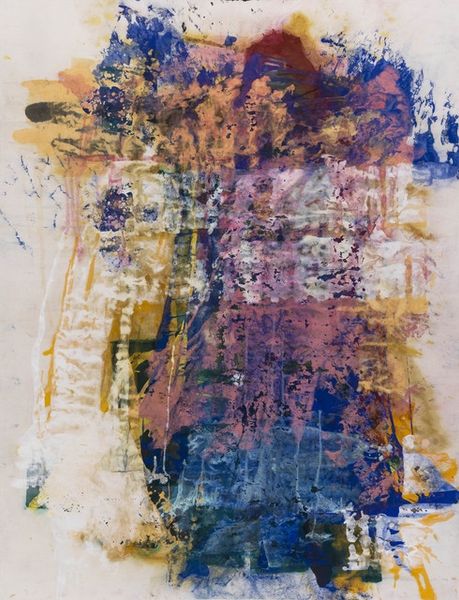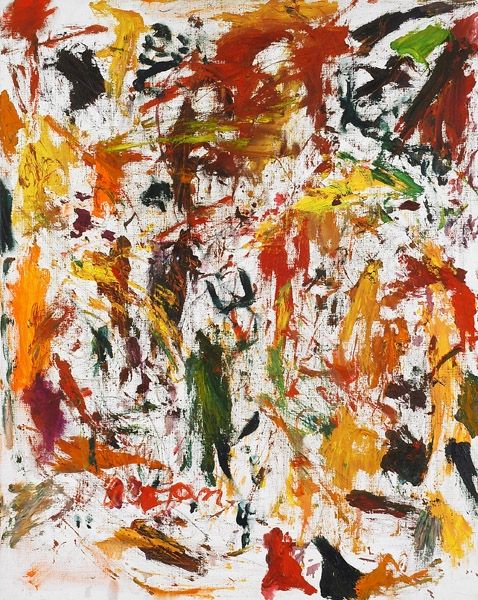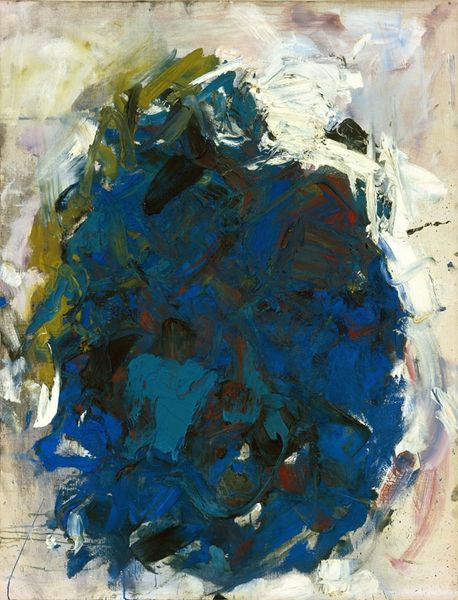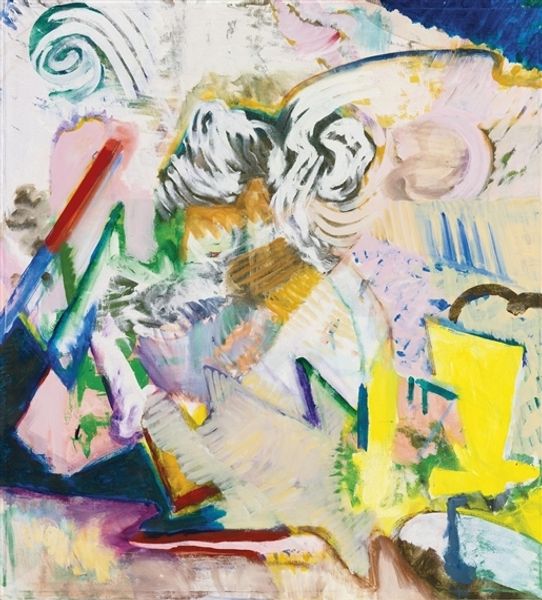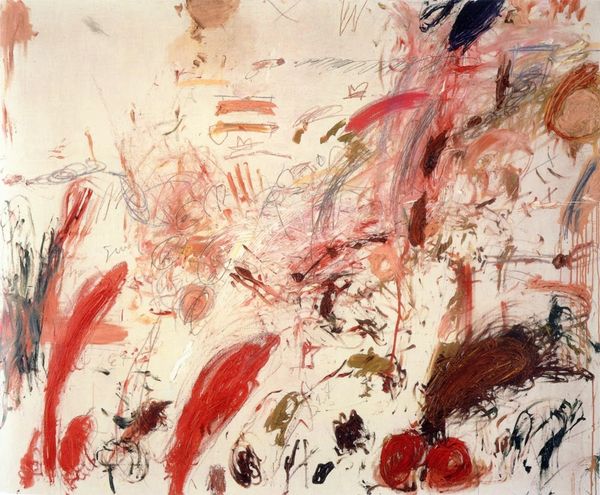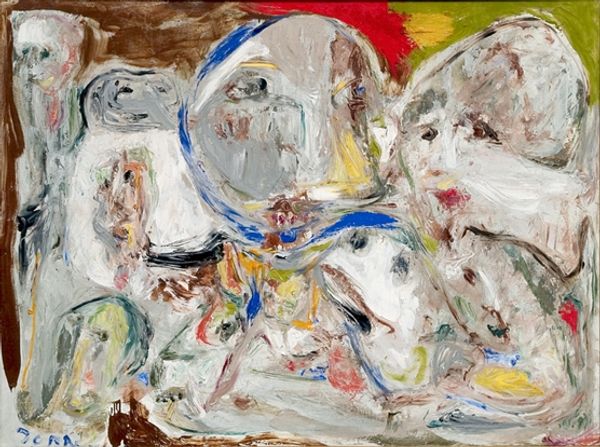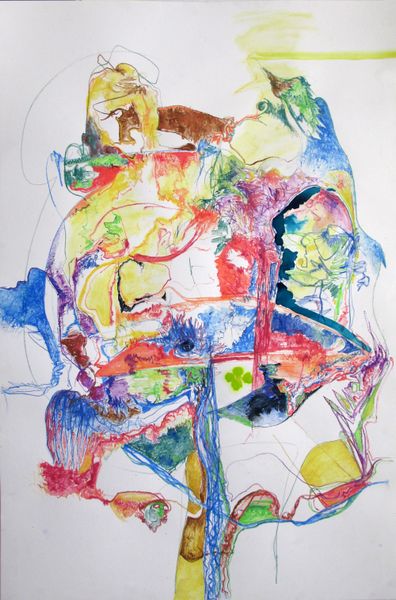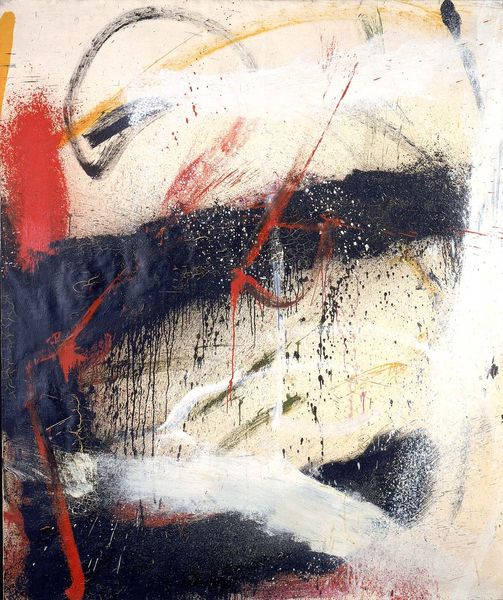
Copyright: Aurel Cojan,Fair Use
Curator: Aurel Cojan's "Nu," created in 1999 with oil paint, is a fascinating work—but also slightly perplexing at first glance. Editor: Perplexing is right. It feels chaotic, almost like the artist was working through an intense emotion. The energy in the brushstrokes is quite palpable, though I confess I’m struggling to find representational forms amidst the abstract gestures. Curator: Cojan was clearly engaging with the history of the nude, but also critiquing its traditionally idealized and often objectified portrayal. This piece disrupts conventional expectations around figuration. Editor: I see that disruption in the lack of defined contours and the incomplete rendering of the body. The palette is also unusual for a nude—those blues and browns layered over the washes create a strange sort of visual tension. Curator: These are gestures characteristic of Abstract Expressionism, which sought to represent inner psychological states through purely formal means. Its very difficult and maybe unfair to ignore that. What emerges when form takes precedence over the body? Editor: Form becomes the primary language, perhaps reflecting the ephemeral, always shifting experience of the body. But there’s also something inherently private about the composition. It feels like a fragment of something intensely personal that’s barely legible. Curator: The '90s context is key here. Consider the rise of feminist art criticism questioning the male gaze, and postmodern critiques of representation. Cojan’s nude refuses to be easily consumed. It demands that we reckon with what it means to represent the body after such seismic shifts. Editor: Looking at the raw brushwork now, the gestural marks take on their own significance. Each stroke is like a micro-expression of energy. Even the exposed canvas surrounding these colors influences my perception—almost as if it's exhaling negative space. It allows these visceral gestures to become active again. Curator: Exactly, this artwork provides an insight into the dialogue of historical artistic norms. And those norms change all the time. Editor: True—"Nu" speaks to the complexity of interpreting art outside a vacuum, reminding us to embrace ambiguity as an important mode for conveying depth.
Comments
No comments
Be the first to comment and join the conversation on the ultimate creative platform.

